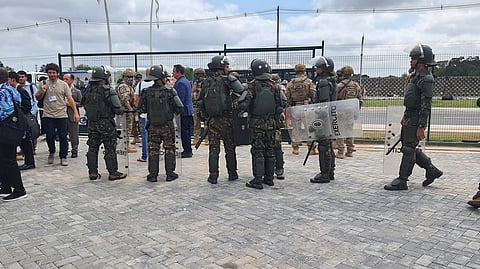

The 30th Conference of the Parties (COP30) to the United Nations Framework Convention on Climate Change (UNFCCC) in Belem, Brazil, began November 10, 2025. Here’s a look at what happened on the fifth day of COP30. Also read the diary for November 10, November 11, November 12, November 13.
A new draft text was shared by the co-chairs. It included multiple options on the key issues of unilateral trade measures, a mechanism to coordinate just transition pathways as well as the reference to transitioning away from fossil fuels. The divergence between the views on each of these issues was evident between the developing and the developed countries. A recap of the negotiations of the just transition work programme can be read here.
Like Minded Developing Countries (LMDCs), Arab Group, African Group of Negotiators, Egypt, South Africa, China, among others, remained firm on their stand for a dedicated outcome on Article 9.1 (obligations of developed countries to provide finance to developing countries) of the Paris Agreement. India, on behalf of LMDCs has demanded a work program on Article 9.1, while the proposal has been opposed by some of the developed group of countries like the European Union.
Twelve countries and 23 international organisations came together to advance the cause of energy transition and a sustainable global economy. The objective of the Belem Declaration is to accelerate decarbonisation of heavy emitting industries and promote green industrialisation in pursuit of global climate and development goals. Countries stressed on the need for multilateral collaboration and enhanced partnerships in support of a global green industrialisation. Building on the kind of support needed, Tuvalu mentioned that providing finance and technical support, sharing knowledge and building capacity are fundamental to implement effective green industrial policies.
Around 100 protestors blocked the main entrance to COP30 on November 14 for over an hour, demanding to speak to Brazilian President Luiz Inácio Lula da Silva about the plight of Indigenous People. The protest was peaceful, with protestors forming a human chain. The morning, however, saw the deployment of riot police, soldiers and military vehicles.